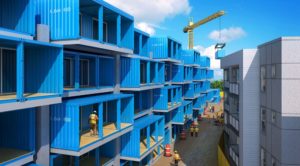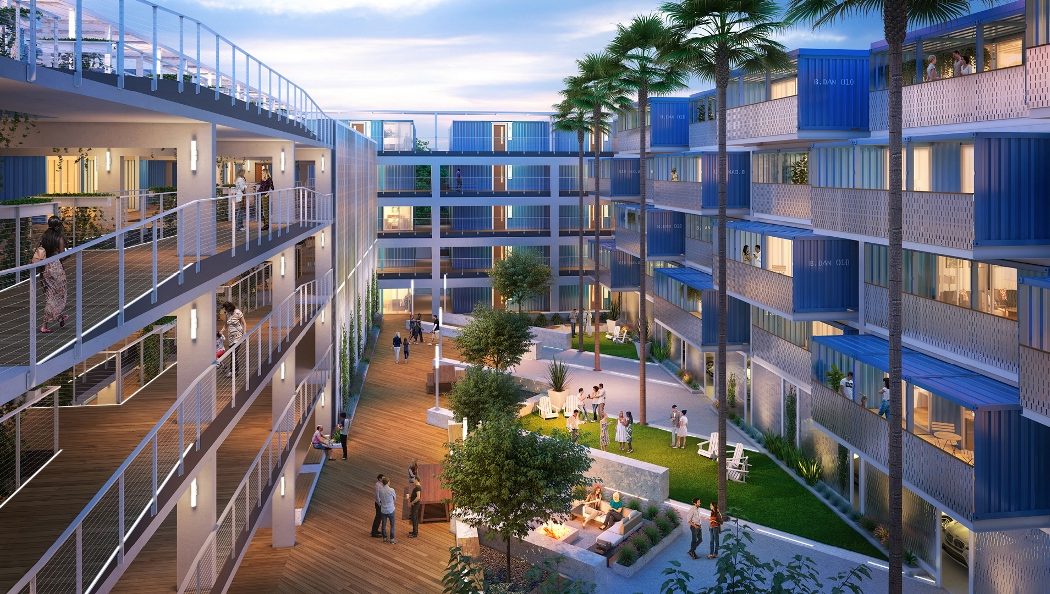Over 6500 square miles of land in the United States is devoted to parking, with over 105 million parking spaces in existence. Approximately 15% to 30% of the entire urban land area is dedicated to parking, yet around 40,000 parking structures and surface lots operate at only half capacity, according to the Urban Land Institute.
Ridesharing services, autonomous vehicles, and alternative transportation are changing the American driving culture, leading to the under-utilization of billions of parking spaces across the United States. These cultural shifts suggest strategic opportunities to develop innovative design solutions.
 On October 10, 2019, the National Multifamily Housing Council (NMHC) has named its five finalists for its 2019 Innovation Challenge competition with KTGY Architecture + Planning receiving finalist honors for “Park House | A Housing Solution for Repurposed Parking Structures”.
On October 10, 2019, the National Multifamily Housing Council (NMHC) has named its five finalists for its 2019 Innovation Challenge competition with KTGY Architecture + Planning receiving finalist honors for “Park House | A Housing Solution for Repurposed Parking Structures”.
Every year, the Challenge seeks innovative solutions to vexing apartment industry challenges. This year’s challenge sought solutions for reducing the construction costs or time to bend the cost curve of housing production as a way to address the nation’s housing affordability crisis. NMHC’s Innovation Committee members reviewed more than 50 applications to select this year’s finalists with KTGY receiving recognition for two of the five top finalist honors.
Theorized within an existing wrap building parking structure, the Park House concept by KTGY Architecture + Planning’s R+D Studio proposes a system for repurposing obsolete parking structures as housing using purpose-built modular components to maximize efficiency and minimize disruption to the structure.
By incorporating the use of modular components, the units can be constructed, including fixtures and finishes, simultaneous to the on-site construction required for converting the parking structure to a residential building. This process can significantly reduce the construction cost and provide a mechanism for bringing housing units to the market in an efficient and timely manner.
The proposed construction sequencing begins by removing the internal parking structure ramp to provide access for unit installation and later provides a generous internal courtyard. Working within the parking structure’s 28-foot structural bay, three prefabricated modules side-by-side measure 26 feet wide.
A prefabricated extension fits between the columns, adding 128 square feet of unit area. A steel channel is welded to the underside of each steel module, creating a one-foot plenum below to house plumbing and electrical systems. The plumbing for each unit can run beneath the modules within the plenum and connect to the main stack through pipes cored through strategic locations in the slab. Wood decking in the corridors provides an accessible path of travel to unit entries lifted above the utility plenum and is more suitable for residential use.
Simple cable and steel railings allow light and air movement where there were once concrete low walls. The modular units push and pull creating interesting movement in the elevation. Punched slab openings along the wide corridors provide light and vertical green spaces, with planters and hanging vines filling the void.
The Park House concept transforms a parking structure that once provided 1091 parking stalls into a 119-unit residential building with a density of nearly 80 dwelling units per acre.
A winner will be announced from the five finalists at the 2019 NMHC’s OPTECH Conference & Exposition in Dallas, Texas, on November 13, 2019.
Images courtesy of KTGY Architecture + Planning’s R+D Studio.

